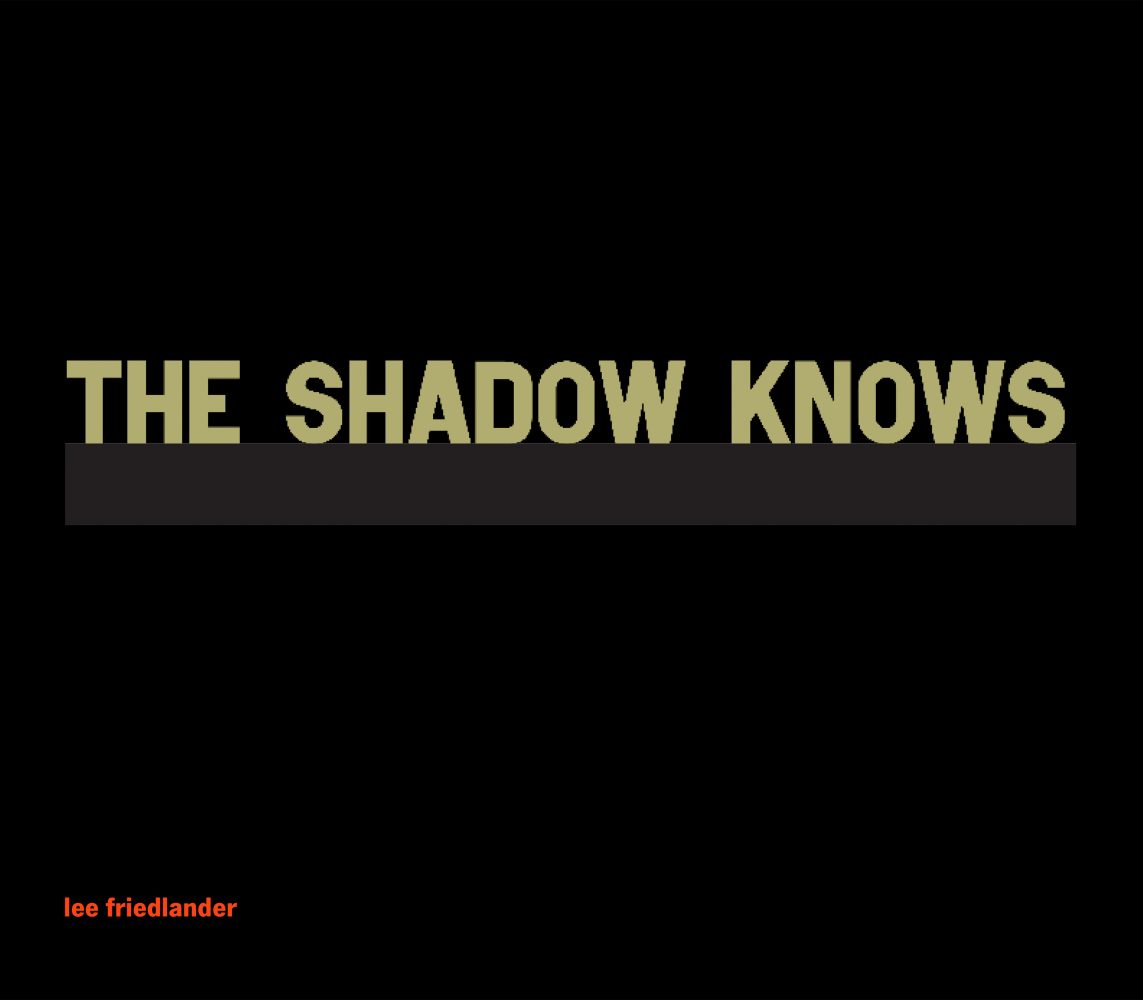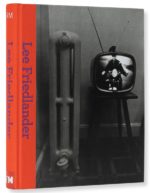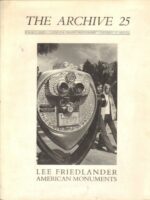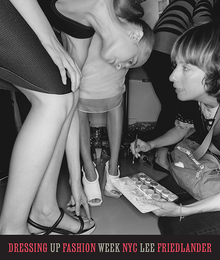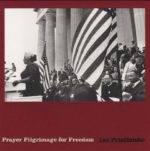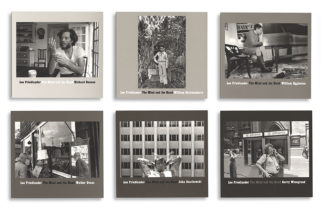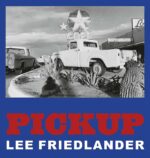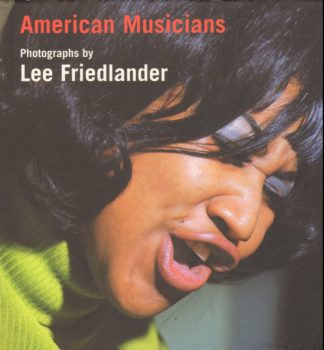Parfois, l’ombre de Friedlander est présentée comme inquiétaOmbrente – imposée à une autre personne, parfois à sa femme – donnant l’impression de sournoiserie, de désir ou de possession. D’autres fois, c’est ludique, drapé sur un cactus ou un tas de pierres, transformant le photographe en personnage de dessin animé avec des parties du corps exagérées. Et parfois, il s’intègre simplement à une scène, souvent dans laquelle on distingue l’appareil photo tendu vers son œil – la version du photographe de briser le quatrième mur.
Une chose est claire tout au long du livre: son ombre est traitée comme un invité d’honneur et Friedlander profite pleinement de l’entreprise, trouvant inlassablement des moyens de l’adapter à son propre drame. L’historien et conservateur Rod Slemmons a écrit que Friedlander «nous offre un nouveau monde visuel dans lequel l’obstruction, la confusion et l’accident sont les forces motrices» – une déclaration jamais plus évidente que dans ce livre.
Friedlander, vous imaginez, a découvert non seulement le mal et pas seulement dans le cœur des hommes, mais quelque chose de plus profond dans le sien, et dans ces 101 photographies nous montre ce qu’il a appris à savoir.
Né à Aberdeen, Washington en 1934, Lee Friedlander a commencé à photographier à l’âge de quatorze ans. En 1967, le travail de Friedlander a été inclus dans la très influente exposition New Documents, organisée par John Szarkowski au Museum of Modern Art. Deux ans plus tard, il publiera son premier de 51 livres (à ce jour), entamant une carrière de production photographique extraordinaire.
Embrassant chaque sujet avec la même passion, Friedlander a photographié presque toutes les facettes de la vie américaine des années 1950 à nos jours, des usines de Pennsylvanie à la scène jazz de la Nouvelle-Orléans, en passant par les déserts du sud-ouest. Pour décrire son intérêt pour la photographie de l’Amérique et de ses habitants, il a inventé le terme «paysage social américain» dans une interview en 1964.
Au cours des cinq dernières décennies, le travail de Friedlander a été exposé au Whitney Museum, au Guggenheim Museum, au Metropolitan Museum of Art, au San Francisco Museum of Modern Art, à la Corcoran Gallery of Art, ainsi qu’à des dizaines d’autres institutions aux États-Unis. États-Unis et dans le monde. En 2005, Friedlander a fait l’objet d’une importante rétrospective itinérante et d’un catalogue organisé par le Museum of Modern Art, le premier du genre pour un photographe vivant. Parmi les nombreux prix qu’il a reçus, il y a trois bourses Guggenheim, trois subventions nationales de dotation pour les arts, un prix Hasselblad et une bourse MacArthur Genius. Il a également reçu des diplômes honorifiques de l’Université de Yale, de l’Université de Pennsylvanie et du Pratt Institute.
À 86 ans, Friedlander continue de produire des œuvres, publie plusieurs livres et expose chaque année son travail aux niveaux national et international.
SPQR Editions est un éditeur de livres de photographie organisé à Brooklyn, NY. Le plaidoyer pour la qualité des livres est évident dans la mission du SPQR, qui représente Senatus Populusque Romanus, «Le Sénat romain et le peuple», et son engagement à être une société à but non lucratif. Afin d’être plus accessibles au public, les livres sont fabriqués dans la plus haute qualité possible – joliment imprimés à l’encre bichromatique dans une industrie locale Grafica SiZ à Vérone, en Italie.
Sometimes Friedlander’s shadow is presented as ominous — imposed over another person, sometimes his wife — lending the impression of sneakiness, desire, or possession. Other times it’s playful, draped over a cactus or a pile of rocks, turning the photographer into a cartoon character with exaggerated body parts. And sometimes he simply makes himself part of a scene, often where you can make out the camera held up to his eye — the photographer’s version of breaking the fourth wall.
One thing is clear throughout the book: his shadow is treated as an honored guest, and Friedlander takes full advantage of the company, tirelessly finding ways of adapting it to his own drama. Historian and curator Rod Slemmons once wrote that Friedlander “provides us with a new visual world in which obstruction, confusion, and accident are the driving forces” — a statement never more evident than in this book.
Friedlander, you imagine, has discovered not just the evil and not just in the hearts of men, but something more profound in his own, and in these 101 photographs shows us what it has come to know.
Born in Aberdeen, Washington in 1934, Lee Friedlander began photographing at the age of fourteen. In 1967, Friedlander’s work was included in the highly influential New Documents exhibition, curated by John Szarkowski at the Museum of Modern Art. Two years later, he would publish his first of 51 books (to date), beginning a career of extraordinary photographic production.
Embracing each subject with equal passion, Friedlander has photographed nearly every facet of American life from the 1950’s to the present, from factories in Pennsylvania, to the jazz scene in New Orleans, to the deserts of the Southwest. To describe his interest in photographing America and its people, he coined the term “the American social landscape” in an interview in 1964.
Over the past five decades, Friedlander’s work has been exhibited at the Whitney Museum, the Guggenheim Museum, the Metropolitan Museum of Art, the San Francisco Museum of Modern Art, the Corcoran Gallery of Art, as well as dozens of other institutions in the United States and around the world. In 2005, Friedlander was the subject of a major traveling retrospective and catalogue organized by the Museum of Modern Art, the first of its kind for a living photographer. Among the many awards he has received are three Guggenheim Fellowships, three National Endowment for the Arts Grants, a Hasselblad Award, and a MacArthur Genius Grant. He was also awarded honorary degrees from Yale University, the University of Pennsylvania, and Pratt Institute.
At 86 years old, Friedlander continues to produce work, publishing multiple books and exhibiting his work nationally and internationally every year.
SPQR Editions is a boutique publisher of curated photography books based in Brooklyn, NY. The advocacy for quality in books is apparent in the mission of SPQR, which stands for Senatus Populusque Romanus, “The Roman Senate and People,” and its commitment to being a nonprofit corporation. In order to be made more accessible to the public, the books are made in the highest quality possible—handsomely printed in duotone ink at a local industria Grafica SiZ in Verona, Italy.

